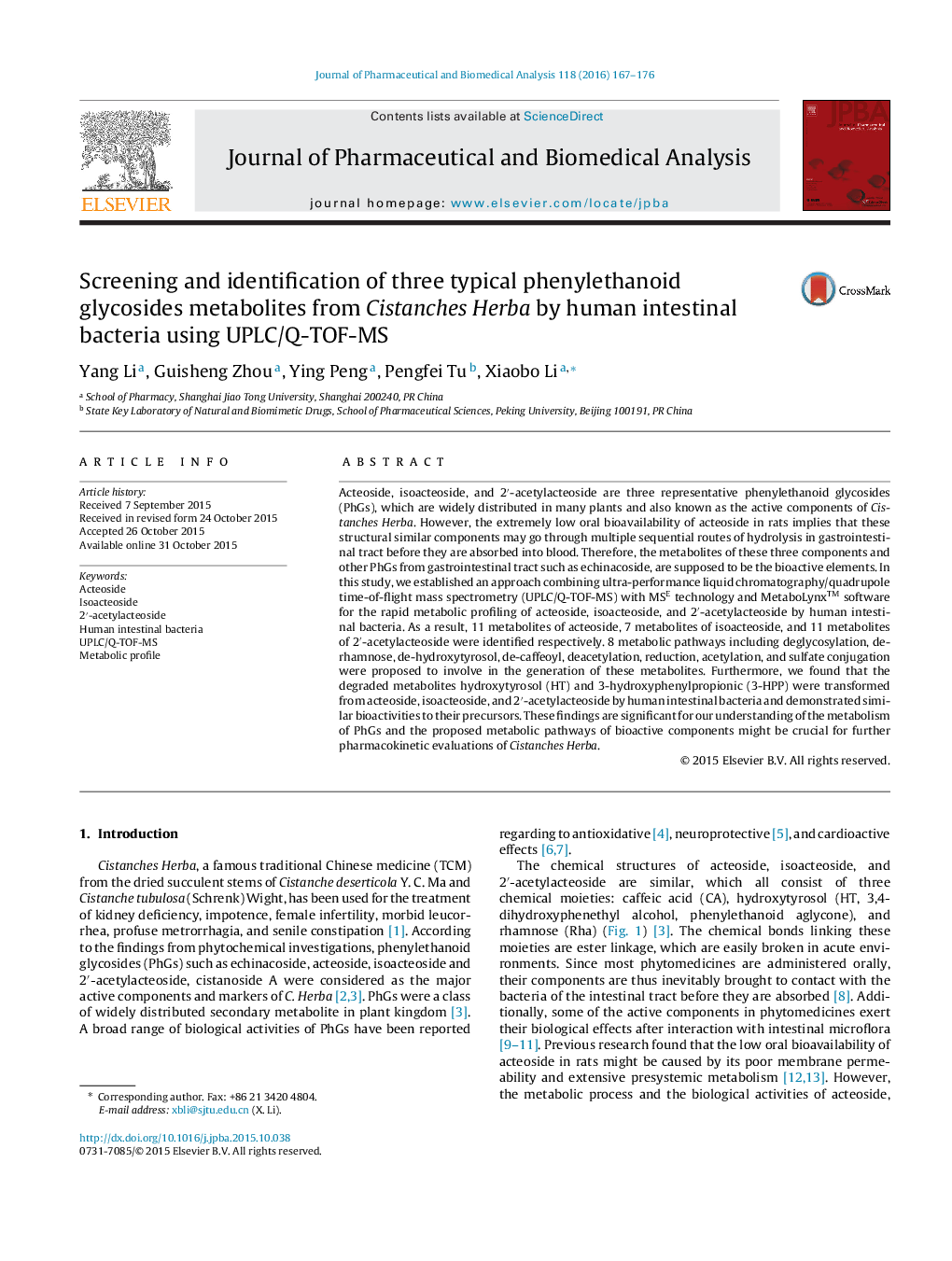| کد مقاله | کد نشریه | سال انتشار | مقاله انگلیسی | نسخه تمام متن |
|---|---|---|---|---|
| 1220651 | 1494617 | 2016 | 10 صفحه PDF | دانلود رایگان |

• Acteoside, isoacteoside, and 2′-acetylacteoside are three typical phenylethanoid glycosides, and the main active components of Cistanches Herba.
• 11 metabolites of acteoside, 7 metabolites of isoacteoside, and 11 metabolites of 2′-acetylacteoside produced by human intestinal bacteria were respectively identified.
• 8 metabolic pathways of acteoside, isoacteoside, and 2′-acetylacteoside by human intestinal bacteria was investigated.
• UPLC/Q-TOF-MS with MSE technology and automated MetaboLynx™ software was used for identifying the metabolites of acteoside, isoacteoside, and 2′-acetylacteoside.
Acteoside, isoacteoside, and 2′-acetylacteoside are three representative phenylethanoid glycosides (PhGs), which are widely distributed in many plants and also known as the active components of Cistanches Herba. However, the extremely low oral bioavailability of acteoside in rats implies that these structural similar components may go through multiple sequential routes of hydrolysis in gastrointestinal tract before they are absorbed into blood. Therefore, the metabolites of these three components and other PhGs from gastrointestinal tract such as echinacoside, are supposed to be the bioactive elements. In this study, we established an approach combining ultra-performance liquid chromatography/quadrupole time-of-flight mass spectrometry (UPLC/Q-TOF-MS) with MSE technology and MetaboLynx™ software for the rapid metabolic profiling of acteoside, isoacteoside, and 2′-acetylacteoside by human intestinal bacteria. As a result, 11 metabolites of acteoside, 7 metabolites of isoacteoside, and 11 metabolites of 2′-acetylacteoside were identified respectively. 8 metabolic pathways including deglycosylation, de-rhamnose, de-hydroxytyrosol, de-caffeoyl, deacetylation, reduction, acetylation, and sulfate conjugation were proposed to involve in the generation of these metabolites. Furthermore, we found that the degraded metabolites hydroxytyrosol (HT) and 3-hydroxyphenylpropionic (3-HPP) were transformed from acteoside, isoacteoside, and 2′-acetylacteoside by human intestinal bacteria and demonstrated similar bioactivities to their precursors. These findings are significant for our understanding of the metabolism of PhGs and the proposed metabolic pathways of bioactive components might be crucial for further pharmacokinetic evaluations of Cistanches Herba.
Figure optionsDownload as PowerPoint slide
Journal: Journal of Pharmaceutical and Biomedical Analysis - Volume 118, 25 January 2016, Pages 167–176